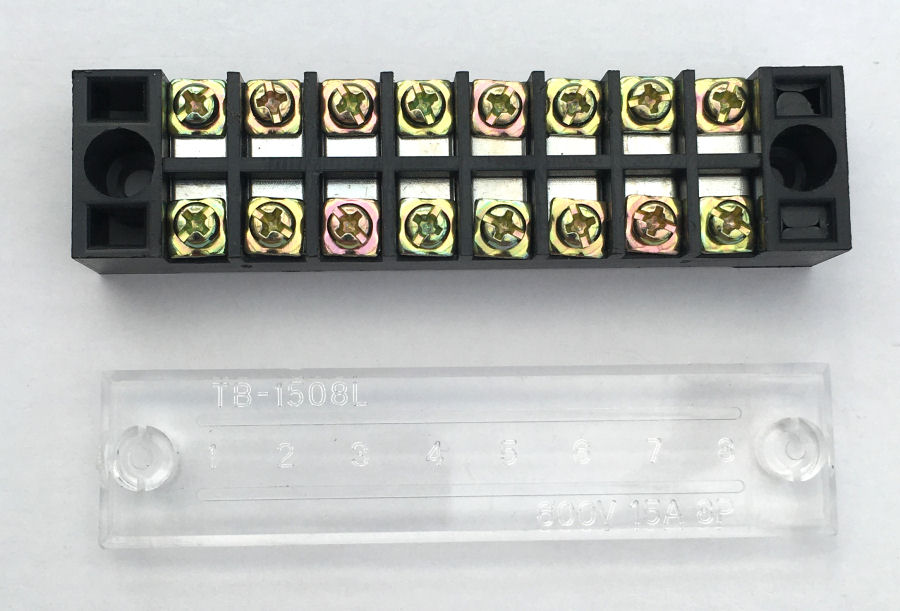Wiring
Low Voltage Wiring
We use a lot of low voltage wiring in our home for connecting up things like lighting, sensors, etc.
Wire Gauge
I'm mostly using three types of wiring in my smart home for low voltages:
- 1.0mm² 32/0.2 multiple strand 'thinwall' cable rated at 16.5A. This is most used for power distribution and lighting, to avoid large voltage drops.
- 0.5mm² 16/0.2 multiple strand 'thinwall' cable rated at 11A. This is used for lower current distribution and low current lighting, such as our safety lighting and emnergency lighting.
- 0.22mm² 7/0.2 multiple strand 'equioment wire' rated at 1.4A. This is used for carrying 12V and 5V signals and power to electronics devices.
I do use heavier gauge wiring from larger projects and higher current applications, especially when voltage drops may be an issue.
Colour Coding
Fuses
Terminations


Where I have to join many wires together, I tend to use these 8-way terminal blocks which are desinged to work with crimped and soldered fork connections. The plastic cover is to prevent accidental shorts.


